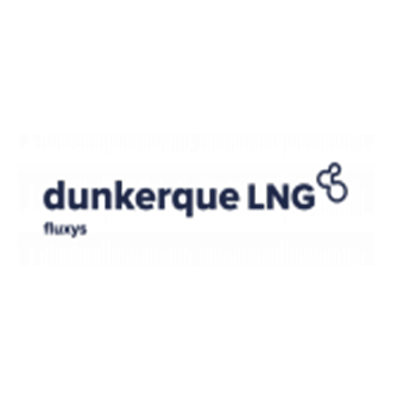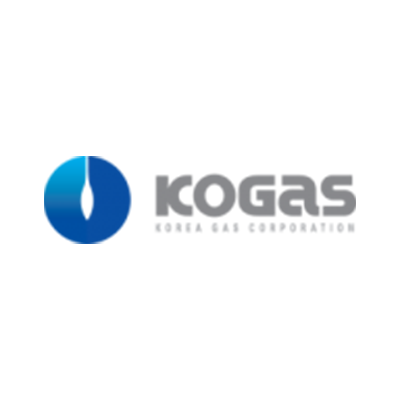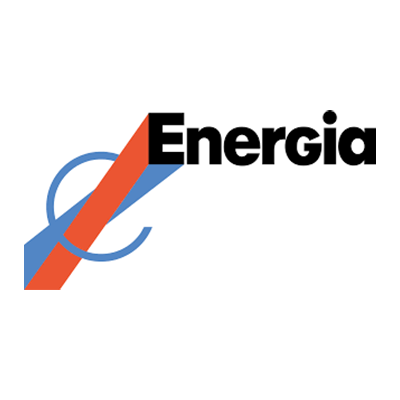LNG IS THE CLEANEST BURNING FUEL
LNG and natural gas are playing a significant role in enabling the energy transition and providing a quick switch from dirtier energy sources like coal or heavy fuels to a cleaner alternativ
When used in power generation, natural gas emits 45% to 55% lower greenhouse gases emissions than coal.
In the industrial sector, LNG and natural gas provide a clean solution to those industrial sectors which need a high calorific fuel in their production process, and which are the most difficult to electrify.
In developing economies, it will replace traditional biomass in heating and cooking, helping to reduce the health impacts of localised emissions from other fuels.
In the transport sector, LNG has also shown significant reduction in emissions (both greenhouse and particulate) compared to traditional fuels, and is helping diversify the fuel mix and reduce air pollution as a fuel for heavy duty road transport and shipping.
 These advantages suggest a central role for natural gas in the energy transition. In its New Policies Scenario, the IEA expects that use of natural gas could increase by 45% over the next 25 years. Developing countries are expected to account for more than three-quarters of that growth.
These advantages suggest a central role for natural gas in the energy transition. In its New Policies Scenario, the IEA expects that use of natural gas could increase by 45% over the next 25 years. Developing countries are expected to account for more than three-quarters of that growth.
AMPLE FUTURE SUPPLY FOR NEW PROJECTS
Natural gas and LNG is an abundant, secure and flexible source of energy and the high levels of anticipated demand can easily be met by known levels of recoverable natural gas resources. As technology advances, so does our ability to unlock the world’s natural gas resources. Today, global proven gas resources stand at 769 trillion cubic metres, enough to supply global gas demand for 219 years at current levels of demand.
There is ample LNG supply on the horizon: many potential LNG projects are currently being proposed worldwide, compared with a current consumption of 354.7 million tonnes.
There has been rapid growth in the number of countries supplying LNG, almost doubling between the start of the century and 2019. This has significantly increased the flexibility and security of gas supply options for importing countries.

LNG PROVIDES AFFORDABLE ENERGY ACCESS
In 2020 LNG provided affordable energy access to 43 markets with a combined population of over 5 Bn people.
Since 2000, the number of LNG importing countries has quadrupled.

In 2020:
- LNG regasification capacity amounted to 947 MTPA
- LNG liquefaction capacity amounted to 454 MTPA
In a continuous evolving market, different small-scale solutions have also been developed tailoring customer needs. These include: small liquefaction plants, small regasification plants, bunkering services etc. Floating solutions often provide quick access to LNG markets at a lower cost than traditional onshore facilities.
A complete picture of the World LNG Infrastructure can be viewed here.
LNG ENABLES COAL TO GAS-SWITCH IN POWER GENERATION
Natural gas plays a key role in power generation, since burning natural gas in combined gas-fired powered plants, has proved to be more efficient and cleaner than burning other fossil fuels, like coal.
On a lifecycle basis, studies have concluded that LNG emits around half the greenhouse gas emissions that coal does when burnt to generate electricity.
Compared to a typical new coal plant, natural gas emits 50 to 60% less carbon dioxide (CO2) when combusted in a new efficient natural gas power plant. Using natural gas to substitute all coal consumed in power generation would reduce CO2 emissions by 1,200 Mt. Regions like Asia Pacific, show a huge potential for conversion.
 However, the gas industry is challenged by greenhouse gas emissions over the lifecycle of the entire gas value chain. Some claim that the intrinsic benefits of gas may be limited or even negated by upstream methane emissions, and, in the case of Liquefied Natural Gas (LNG), the extra energy required for liquefaction.
However, the gas industry is challenged by greenhouse gas emissions over the lifecycle of the entire gas value chain. Some claim that the intrinsic benefits of gas may be limited or even negated by upstream methane emissions, and, in the case of Liquefied Natural Gas (LNG), the extra energy required for liquefaction.

LNG SUPPORTS THE INTEGRATION OF INTERMITTENT RENEWABLES
LNG supports the integration of intermittent renewable electricity. Many countries with a high share of LNG imports, use the regasified LNG (i.e. natural gas) to produce electricity through gas fired-powered plants when the sun is not shining or the wind is not blowing.
In Spain for example, where LNG represented 57% of the total gas supply in 2019, LNG acts as an enabler to renewable energy, by providing a clean, flexible and a reliable alternative when electricity generation from renewable energy is low.

LNG FUELS CLEAN GROWTH IN INDUSTRY
Increasing use of cleaner-burning natural gas in industry, where it displaces coal and oil, offers the potential to significantly reduce greenhouse gas emissions and air pollution in the sectors which are hard to electrify.
- Light Industry
In light industries, the use of small boilers heated by coal are a major cause of local air pollution. Displacing coal and diesel with gas boilers can make a significant contribution to lower greenhouse gas emissions, improved air quality and cost reductions.
- Heavy industry
The heavy industry is amongst the hardest sectors to electrify. In the iron, steel, cement, and chemical production processes, hydrocarbons are required to produce high temperatures or chemical reactions, and therefore need a fuel with a high calorific power.
In these sectors, displacing coal with natural gas can make a significant contribution to lowering greenhouse gas emissions and improving air quality.
LNG IMPROVES ENERGY SECURITY
LNG can be imported from 22 different sources, making it an accessible and available fuel, which can be procured flexibly and easily.
Adding LNG import points, increases security and diversification of supply, providing access to a wide number of LNG sources, helping to reduce in some cases, the dependence from other energy sources.
Furthermore, LNG can be stored in LNG tanks or once regasified it can be stored in underground gas storages, allowing to increase the security of supply, and benefit from the summer-winter spreads.
The quick access to multiple LNG sources, enables to cover from power supply shortages in a short timeframe, and avoids to burn liquid fuels and high carbon coal in case of disruptions.

ENABLING CLEAN MOBILITY
In the transport sector, LNG is already available and reduces greenhouse gas emissions and improves air quality compared to conventional fuels – particularly in heavy duty road transport and shipping which are the most difficult to electrify due to the need to secure high on-board energy capacity storage.
Replacing liquid conventional fuels in the freight transport, both of road and maritime, is highly challenging because of the high energy density of these products and the wide distribution system already in place for so many decades. With an energy density (in volume) 40% lower than diesel, LNG is a lower carbon fuel suitable to cover a wide range of transport applications, from road to maritime.
LNG as a transport fuel, offers numerous environmental advantages and helps improving air quality, namely in cities and ports.
- Maritime Transport
LNG offers environmental advantages over traditional marine petroleum fuels. It is the least polluting marine fuel both in terms of greenhouses gases and local pollutants. It is a solution to the tighter environmental rules and regulations set by the International Maritime Organisation (IMO) and by regional air quality controls.
According to the different engine technologies, switching from conventional fuels (HFO) to LNG offers up to 28% at the exhaust CO2 emissions reduction. Depending on the analysis and types of engines the CO2 reductions can vary in the different ranges:
–Tank to Wake: between 18 to 28% for 2-stroke slow speed engines and between 12 to 22% for 4-stroke medium speed engines
– Well to Wake: between 14% to 21% for 2-stroke slow speed engines and between 7% to 15% for 4-stroke medium speed engines
LNG is compliant with IMO’s sulphur regulation and emissions reduction targets and comes as an immediate answer to the IMO sulphur cap with effect since January 2020.
A new generation of vessels (ferries, cruise-ships, bulk carriers, container ships…) are able to use LNG and thus significantly reduce the pollution from maritime shipping operations.
In terms of air pollutants:
- Compared to current heavy fuels, LNG’s sulphur (SOx) content is 1,000 times lower than the IMO 0.5% target, which makes it compatible with the IMO 2020 global sulphur cap.
- LNG reduces NOx emissions by up to 80% compared to the traditional heavy-fuel oil (HFO) used in the shipping sector.
- LNG is able to deliver Particulate Matter (PM) reduction of up to 99 % compared with HFO operation.
 Road Transport
Road Transport
LNG is one of the most promising solutions to achieve emissions targets for heavy-duty vehicle emissions. When switching from conventional fuels (HFO) to LNG, current engine technologies are providing 20% reductions. In particular, when looking at emissions savings from LNG compared to diesel – which represents today 98% of all heavy-duty applications, natural gas combustion provides a 23% CO2 emissions reduction for the same content of energy (56.4 g CO2/MJ vs 73.2 g CO2/MJ).
Moreover, with the increasing development and use of synthetic and BioLNG, the road transport sector could see its GHG emissions reduced by up to almost 100%, achieving net-zero emissions
Also, LNG for road transport provides significant reductions in terms of air pollutants:
- NOx emissions result lower with natural gas compared to Diesel under real driving conditions. NOx emission from LNG trucks are reduced by a range from 40% to 75% compared to Diesel according to the different operating conditions.
- Particulate Matter emissions from LNG engines are negligible due to the gaseous nature of the fuel. In term of mass, generation of particles compared to Diesel is reduced up to 95%.
- SOx is almost negligible.
LNG IMPROVES AIR QUALITY
LNG does not only reduce greenhouse gas emissions but also air pollutants.
The rapid growth of cities is focusing attention on the environment and health impacts associated with air pollution from electricity generation, particularly when power plants are located close to urban centres.
In power generation, replacing coal with gas in electricity production is a must, as it is the most effective way to quickly reduce pollutant emissions such as SOx, NOx and particulate matters, by up to 99%.
 In the industrial sector, displacing coal with natural gas can make a significant contribution to lowering greenhouse gas emissions and improving air quality.
In the industrial sector, displacing coal with natural gas can make a significant contribution to lowering greenhouse gas emissions and improving air quality.
In China, for example, a major policy programme to substitute coal boilers with natural gas boilers in North East China allowed to improve air quality of air in the Beijing region and to decrease the volume of air pollutants by 80% over the last 5 years. As Beijing gas demand was boosted, air pollution was dramatically and quickly reduced.
 In the transport sector, LNG in maritime and road transport can quickly improve air quality in ports and cities, since it provides a significant emission reductions compared to conventional fuels – particularly in heavy duty road transport and shipping which are the most difficult to electrify.
In the transport sector, LNG in maritime and road transport can quickly improve air quality in ports and cities, since it provides a significant emission reductions compared to conventional fuels – particularly in heavy duty road transport and shipping which are the most difficult to electrify.


 Enabling Competitive and Cleaner Transport – GIIGNL (2019)
Enabling Competitive and Cleaner Transport – GIIGNL (2019)



















































































